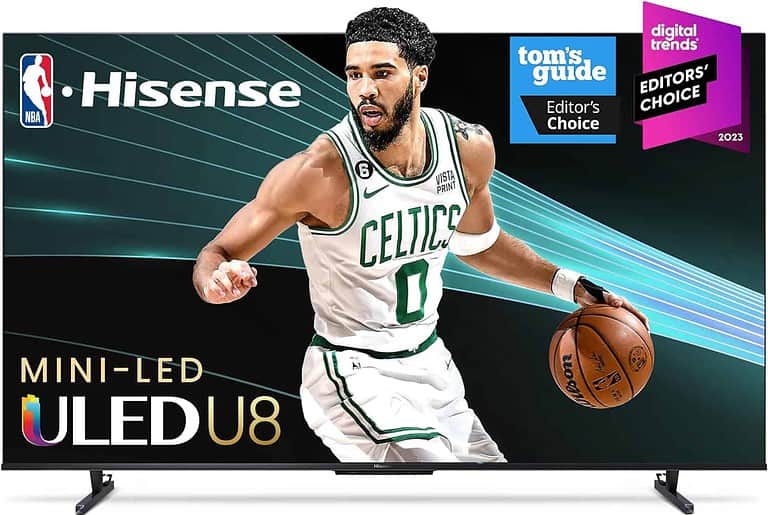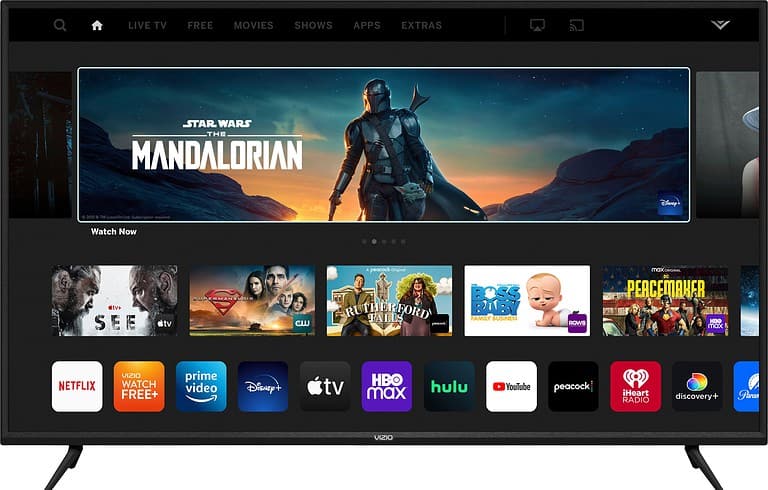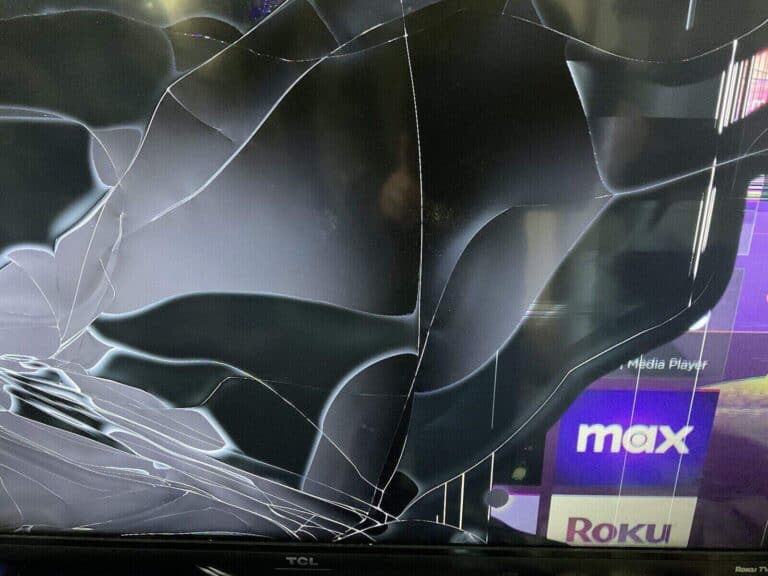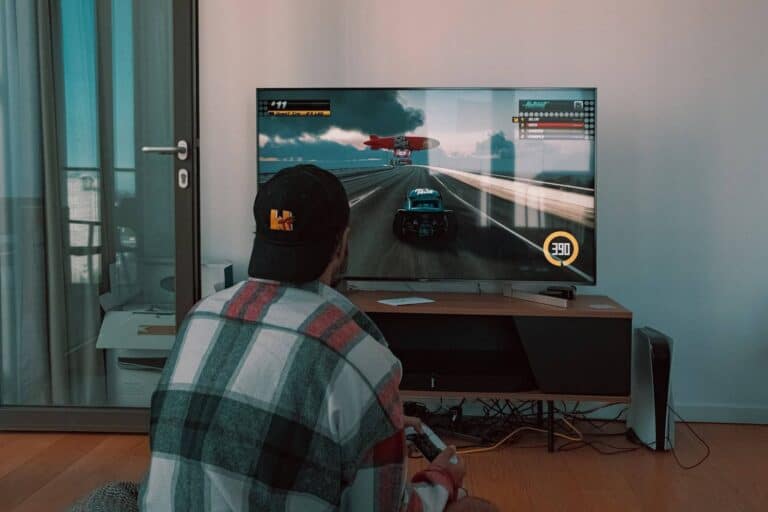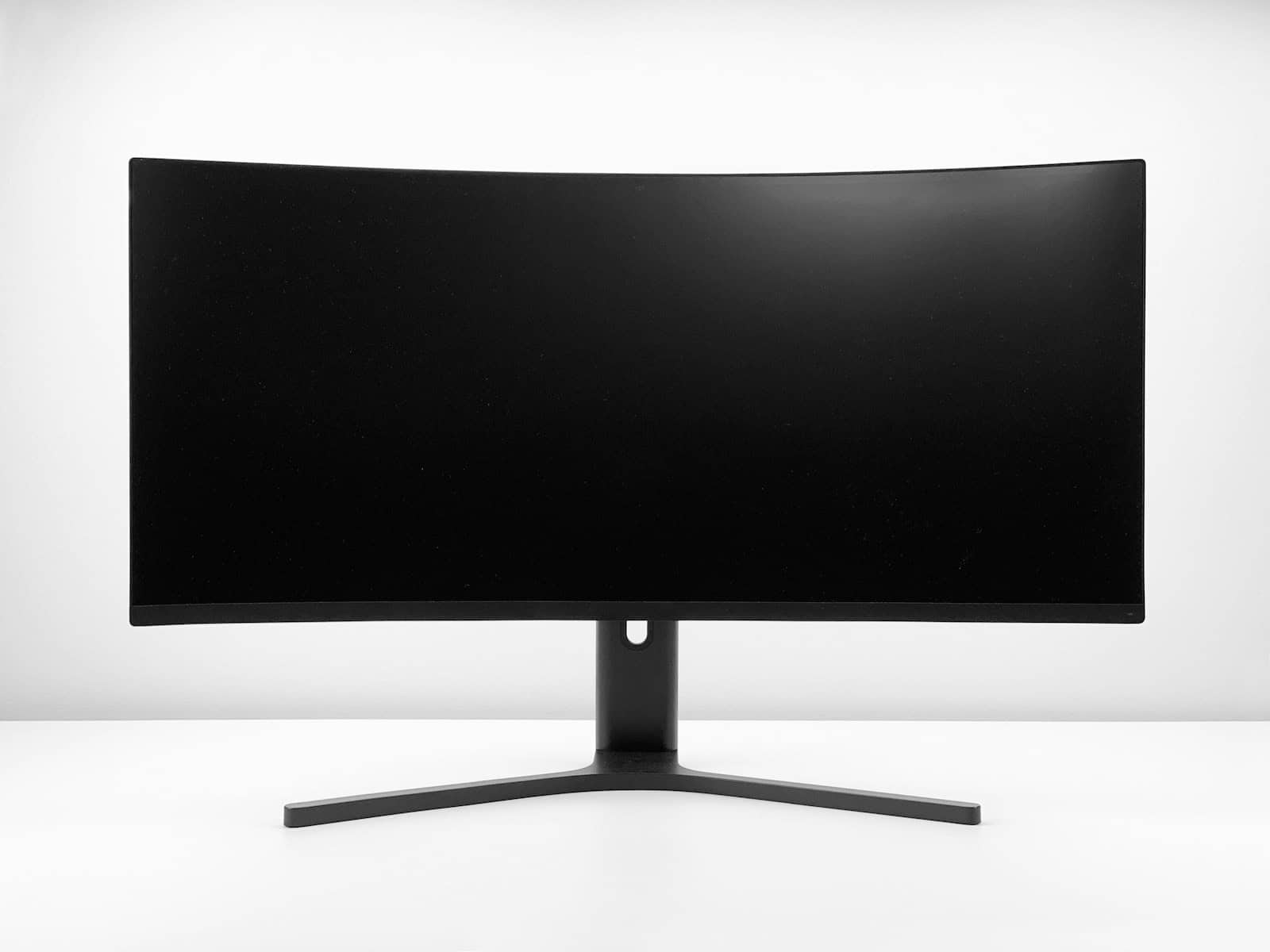
Curved TVs have a unique design that wraps the edges of the screen toward the viewer to create a more immersive viewing experience. The gentle arc of the screens provides a wider field of view and reduces glare when compared to flat (traditional) TVs, making them appealing for gamers and productivity enthusiasts. Manufacturers like LG and Samsung have integrated this technology into their smart TVs, offering features such as 4K resolution, upscaling capabilities, and built-in smart functions. While curved TVs provide an immersive viewing experience with enhanced depth and wider angles, they also have drawbacks such as glare, limited viewing positions, and higher prices.
Considering these pros and cons can help you decide if a curved TV is right for your home entertainment setup. The technology behind curved TVs complements high-definition visuals and smart connectivity options, allowing viewers to enjoy crisp, vibrant picture quality and a more engaging experience. Additionally, many curved TVs have features that enhance convenience, like screen mirroring and voice control through platforms like Alexa, enabling users to wirelessly display their computer content or navigate their TV using voice commands.

Are Curved Screens Right for You? A Closer Look
Immersive Viewing Experience
Curved TVs create a more immersive experience, drawing you into the action. The subtle curve fills more of your peripheral vision, making you feel like you’re part of the scene.
Enhanced Depth Perception
The curved shape can enhance the perception of depth in images. This effect can make scenes feel more three-dimensional and realistic, particularly in movies and games.
Wider Viewing Angles
Some curved TVs claim to offer wider viewing angles compared to flat screens. This means that colors and contrast remain more consistent even when you’re not sitting directly in front of the TV.
Reduced Eye Strain (Potentially)
Advocates of curved TVs suggest that they can reduce eye strain due to the way they align with the natural curve of our eyes. However, scientific evidence for this claim is limited.
Increased Contrast and Color (Claimed)
Some curved TV manufacturers claim their screens offer improved contrast and color compared to flat models. This is due to how the curved surface directs light towards the viewer. However, this benefit can be subjective and may not be noticeable to everyone.
Glare and Reflections
One of the main drawbacks of curved TVs is their tendency to produce glare and reflections. This can be especially noticeable in brightly lit rooms or with windows opposite the TV.
Limited Viewing Positions
The optimal viewing experience on a curved TV is typically from directly in front of the screen. Viewing from the sides can distort the image and reduce picture quality.
Price
Curved TVs often come with a premium price tag compared to flat-screen models with similar specifications. This is due to the more complex manufacturing process involved in creating the curved panel.
Wall Mounting Challenges
Curved TVs can be trickier to wall mount than flat TVs due to their shape. Some models may not even be compatible with standard wall mounts.
Limited Model Availability
The popularity of curved TVs has declined in recent years, leading to fewer options available on the market compared to flat-screen TVs.
Table: Pros and Cons of Curved TV Displays
| Pros | Cons |
|---|---|
| Immersive viewing experience | Glare and reflections |
| Enhanced depth perception | Limited viewing positions |
| Potentially wider viewing angles | Higher price |
| Claimed increased contrast and color | Wall mounting challenges |
| Claimed reduced eye strain | Limited model availability |
Key Takeaways
- Curved TV screens enhance immersion and reduce glare.
- They incorporate high-definition visuals and smart features.
- Advanced connectivity options offer ease of use and integration with other devices.
Understanding Curved TV Displays
Curved TV displays offer a unique viewing experience, influenced by their design, technology, and the physical benefits they provide to viewers.
Evolution of Curved TVs
Curved TVs first emerged on the market as a new trend led by major manufacturers like Samsung and LG. They introduced this design with the promise of a cinema-like experience at home. The technology leveraged the form of OLED displays, which allowed screens to be flexible and adopt a curved shape. This was further complemented by high resolutions such as 4K, enhancing the overall image quality.
Benefits of Curved Screens
Curved screens aim to create an immersive viewing experience by wrapping the screen slightly around the viewer’s field of vision. This can lead to benefits like:
- Enhanced Immersion: The curved edges of the screen may help to offer a sense of depth, making the content feel more engaging.
- Reduced Glare: Due to the way light is reflected on a curved surface, these TVs can reduce glare, providing a better viewing experience under various lighting conditions.
- Optimized Viewing Angles: Curved screens can offer consistent contrast and color, even at varying viewing angles, making the picture appear more uniform.
Curved vs Flat Screen
When deciding between a curved and flat screen, it’s essential to consider the viewing experience. Curved screens can offer a sense of immersion, especially beneficial for gaming and watching movies. However, the enhancement is subtle and is most noticeable when sitting directly in the optimal viewing spot. The viewing experience of flat screens is less dependent on where you sit. Flat screens also tend to be more versatile for wall mounting and suit broader seating arrangements. Contrast and color representation are generally excellent on both types, but OLED technology can offer deeper blacks and more vibrant colors, whether the screen is curved or flat.
Technical Specifications and Connectivity
When considering curved TV displays, it’s essential to look closely at the display technology and connectivity options provided. They significantly affect the viewing experience and compatibility with other devices.
Display Technology and Resolution
Curved monitors use an inward curve to mimic the natural field of view, which can create an immersive viewing experience. They often come equipped with OLED panels. OLED, or Organic Light Emitting Diode technology, allows for bright, sharp images with high contrast and is known for its deep blacks and vibrant colors. The resolution of these displays frequently reaches 4K, providing detailed and crisp imagery. Many models support HDR, offering a wider range of colors and better contrast. Some even support Dolby Vision, which is a type of HDR that adjusts the picture to deliver refined color and contrast.
Connectivity Options
Connectivity is crucial for modern TVs. HDMI inputs are standard and they provide a straightforward way to transmit high-quality audio and video signals with just one cable. Most curved TV models come with multiple HDMI ports, catering to various devices such as gaming consoles and streaming boxes. Many TVs also offer USB ports for playing media directly from flash drives and external hard drives. For a wired internet connection, which is typically more stable than Wi-Fi, Ethernet ports are included on many models. These connectivity features ensure that users can easily enjoy a variety of content sources, from streaming services to gaming.
Optimizing for Entertainment
Curved TVs are optimized for different kinds of entertainment. The 21:9 aspect ratio on certain models offers a cinematic view, aligning closely with the widescreen format of many movies. For gamers, some curved gaming monitors offer high refresh rates that make fast-moving visuals smoother and less blurry. HDMI ports are vital here too, as they connect gaming consoles with minimal lag. Sound is another aspect where curved TVs excel; with technologies like Dolby Atmos, they deliver immersive audio that complements the curved visual experience, creating an engaging environment for all kinds of entertainment.
Frequently Asked Questions
In this section, we cover some common inquiries about curved TV displays, focusing on their benefits, viewing experience, and picture quality.
What are the benefits of owning a curved TV display?
Curved TV screens aim to create a more immersive experience by wrapping the edges of the display slightly towards the viewer. This design can also help reduce glare from ambient light and potentially decrease eye strain, as the curvature matches the natural shape of the human eye.
How do curved TV displays enhance the viewing experience?
The curvature of these screens is intended to take up more of your field of view. With more of the screen coming at you from the sides, there’s a sense of depth and involvement in the content you watch, especially during gaming or cinematic experiences.
Are there specific viewing angles recommended for curved TV displays?
Curved TVs perform best when you sit directly in front of them. The ideal viewing angle places the viewer at the center of the radius of the curve, ensuring a uniform and sharp image across the entire screen.
What factors should be considered when choosing between a 55 inch and 65 inch curved TV?
Screen size impacts the immersive effect, with larger screens offering a more pronounced curvature. Consider the size of your room and the typical viewing distance; larger screens are better for bigger rooms where viewers can sit further back to take in the whole screen.
How does a curved TV’s picture quality compare to that of flat screens?
Curved TVs were designed to enhance the viewing experience rather than to improve picture quality itself. While they may provide a more immersive image, the picture quality is generally on par with flat-screen counterparts, given similar resolutions and technology.
What options are available for purchasing a curved TV display now?
Curved TVs are less common on the market today, but some manufacturers still offer them, particularly in higher-end models. When looking for a curved TV, check for current options from leading brands known for their advanced display technology.


